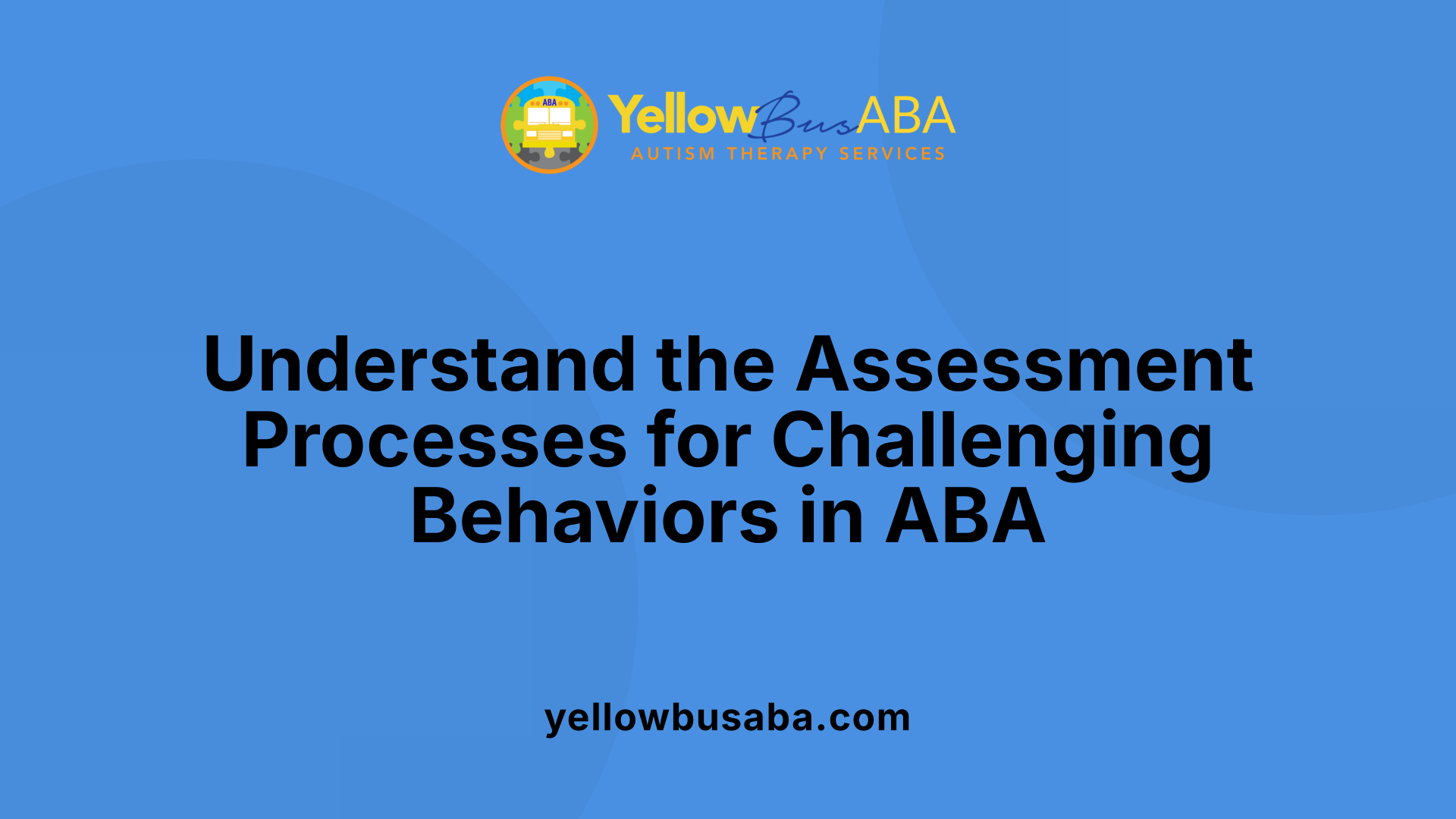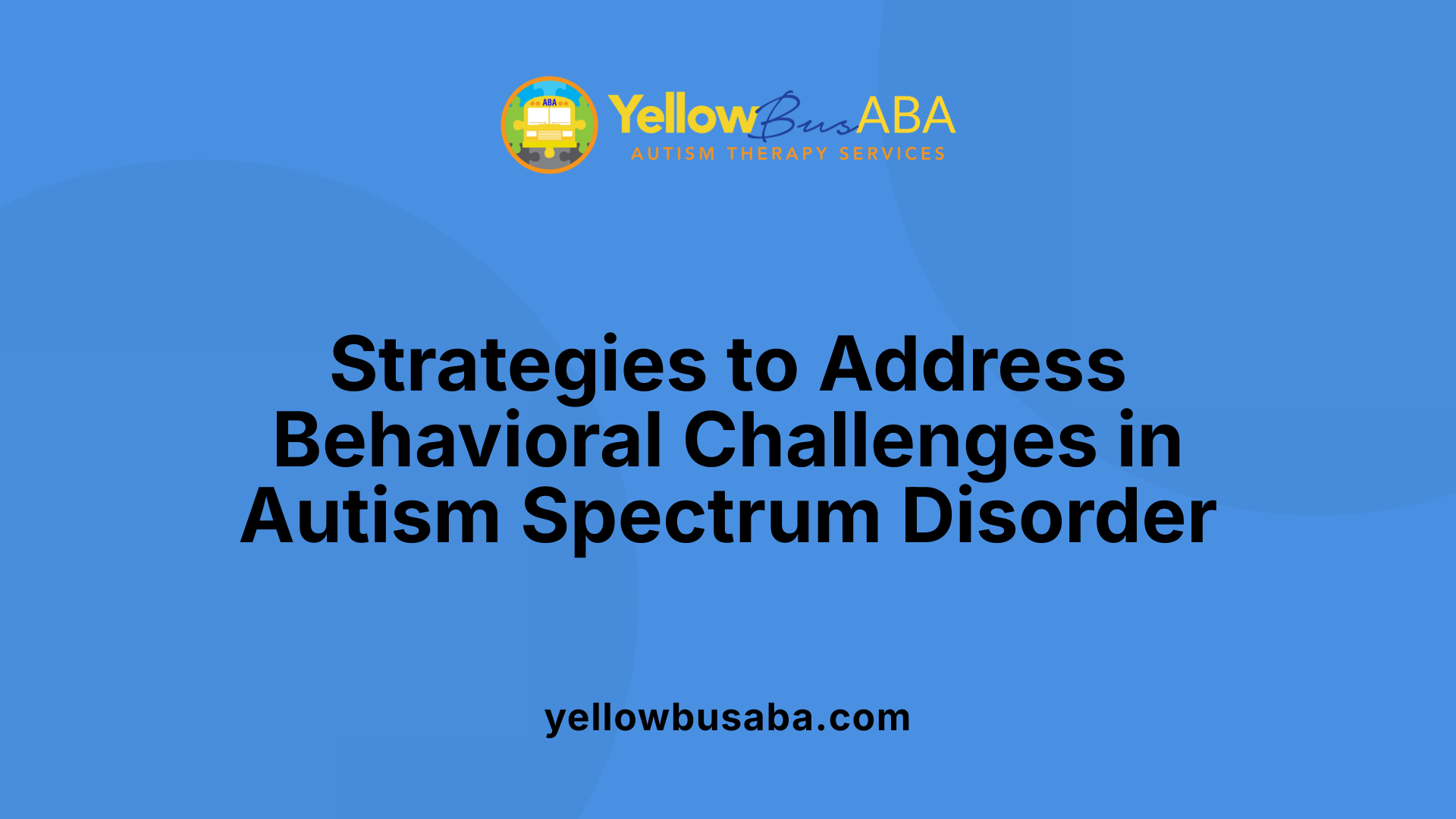Introduction to ABA and Its Role in Addressing Behavioral Challenges
Applied Behavior Analysis (ABA) is a scientifically supported methodology that emphasizes understanding how behaviors function and how they can be modified to improve quality of life. It has been widely adopted, especially for children with autism spectrum disorder (ASD), to effectively manage challenging behaviors and foster positive development across communication, social skills, and daily living. By analyzing the environmental factors influencing behavior, ABA provides a structured approach to help individuals learn new, more adaptive skills while decreasing problematic actions.
Fundamentals of ABA and Its Approach to Challenging Behaviors
What is ABA therapy and how does it address challenging behaviors?
Applied Behavior Analysis (ABA) is an evidence-based method rooted in understanding behavior and how environmental factors influence it. This approach is widely used to help individuals, especially children with autism, build skills and reduce problematic behaviors.
ABA therapy begins with a thorough assessment, often involving a Functional Behavior Analysis (FBA). This process helps identify the triggers, antecedents, and consequences that maintain challenging behaviors such as aggression, self-injury, tantrums, or stereotypy. Understanding the purpose or function that these behaviors serve enables therapists to develop tailored intervention plans.
Interventions focus on replacing unsafe or disruptive behaviors with positive ones that foster independence, communication, and safety. Techniques such as positive reinforcement play a crucial role; desired behaviors are rewarded with praise, access to favorite activities, or other motivators aligned with the individual's preferences.
Specialized teaching strategies like task analysis, visual supports, and front-loading are used to teach new skills matching the individual’s developmental level and learning style. These methods help individuals acquire functional communication skills, whether through verbal requests, sign language, gestures, or tools like PECS.
Throughout the therapy process, continuous data collection allows practitioners to evaluate effectiveness and make necessary adjustments. This ongoing analysis ensures that interventions are responsive to the individual's progress.
Ultimately, ABA aims to modify behaviors by understanding their functions, promoting positive change, and improving overall quality of life. Its adaptability makes it effective in reducing behaviors such as aggression or property destruction while enhancing communication and social skills.
In summary, ABA therapy is a scientifically supported approach that emphasizes understanding behavior in context and applying personalized strategies to foster meaningful improvements. Its focus on behavior analysis, reinforcement, and skill-building creates a foundation for increased independence and better integration into daily life.
Methods and Strategies Used in ABA Therapy
 In ABA therapy, a variety of methods and strategies are employed to help individuals overcome behavioral challenges and develop essential skills. One of the primary techniques is positive reinforcement, which involves rewarding desired behaviors to increase their frequency. Rewards can include verbal praise, access to preferred activities, or tangible incentives that motivate the individual.
In ABA therapy, a variety of methods and strategies are employed to help individuals overcome behavioral challenges and develop essential skills. One of the primary techniques is positive reinforcement, which involves rewarding desired behaviors to increase their frequency. Rewards can include verbal praise, access to preferred activities, or tangible incentives that motivate the individual.
Functional communication training is another core component. This approach teaches alternative ways to express needs and desires, such as using words, sign language, gestures, or picture exchange communication systems (PECS). By improving communication, the reliance on challenging behaviors as a form of expression decreases.
Environmental manipulations are also used to facilitate positive behaviors. This includes structuring the environment to reduce triggers for problematic behaviors and making it easier for individuals to succeed with appropriate responses. Using visual supports like schedules, visual cues, or task analysis helps match interventions to the person's developmental level and learning style.
Family involvement plays a vital role in ABA therapy. Caregivers are trained to implement reinforcement strategies and consistency in applying intervention techniques. This helps generalize skills across different settings and daily routines, promoting lifelong independence.
Overall, ABA therapy integrates these methods—positive reinforcement, functional communication skills, environmental adjustments, and family engagement—to effectively manage behaviors and support meaningful growth. This comprehensive approach ensures that interventions are personalized, adaptable, and focused on improving quality of life.
Core Principles and Approaches in ABA Therapy

What are the core principles and approaches underlying ABA therapy for behavioral issues?
Applied Behavior Analysis (ABA) therapy is founded on scientific principles of learning and behavior, especially operant conditioning. It uses tools like reinforcement and extinction along with the ABC model — Antecedent, Behavior, and Consequence — to understand and modify behaviors.
Reinforcement involves rewarding desired behaviors to increase their occurrence, while extinction reduces unwanted behaviors by withholding reinforcing consequences. For example, praise or access to preferred activities serve as positive reinforcement strategies tailored to individual motivations.
Behavioral analysis techniques form the backbone of ABA. These include functional behavior assessments (FBA), which help identify triggers, environmental factors, and the purpose behind challenging behaviors. The FBA process involves analyzing antecedents, the behaviors themselves, and their consequences to understand why behaviors occur.
Based on FBA results, therapists design personalized intervention plans. These plans incorporate evidence-based methods such as task analysis — breaking complex skills into manageable steps — and visual supports, which help match instructions to the individual’s learning style and developmental level. Such tailored strategies facilitate meaningful and lasting learning.
In ABA, emphasis is placed on generalization — helping individuals demonstrate learned behaviors across different settings, people, and times. This ensures skills are not limited to a specific environment but spread into daily life.
Modern ABA also upholds high ethical standards. Collaboration with caregivers and constant monitoring of progress ensure interventions are respectful, effective, and adaptable. Ongoing data collection enables practitioners to evaluate the success of strategies and make data-driven adjustments.
Overall, ABA's comprehensive approach—integrating behavior analysis, personalized assessment, and ethical practices—aims to promote independence, communication, and adaptive skills, significantly improving the quality of life for individuals with autism.
Assessment Processes in ABA for Challenging Behaviors

How is assessment conducted in ABA therapy for challenging behaviors?
In ABA therapy, understanding the root causes of challenging behaviors is fundamental. The primary method used is the Functional Behavior Assessment (FBA). This comprehensive process involves multiple steps designed to gather detailed information about the behavior, its triggers, and its purpose.
The initial phase of an FBA includes interviews with caregivers, teachers, and others who observe the individual regularly. These conversations help identify patterns and potential triggers of the challenging behavior. In addition to interviews, direct observations are conducted in natural settings to record behaviors as they occur naturally.
A key aspect of assessment involves analyzing the antecedents (what happens before the behavior), the behavior itself, and the consequences (what happens afterward). Collecting this ABC data helps therapists understand why the behavior is occurring.
To confirm hypotheses about the behavior's function, practitioners may conduct a functional analysis. This involves systematically manipulating environmental factors—such as providing or removing certain triggers—to observe changes in behavior. These controlled experiments help pinpoint whether behaviors are maintained by attention, escape, sensory stimulation, or tangible rewards.
Throughout the evaluation process, behavioral analysts also review medical records and consider potential underlying biological or medical causes. Gathering comprehensive information ensures that assessments are thorough and accurate.
Crucially, input from caregivers about the individual’s daily routines, communication abilities, and emotional state plays an essential role. Their insights help identify subtle cues and contextual factors that might influence behavior.
The goal of these assessment procedures is to develop a well-informed, personalized intervention plan. By understanding the specific triggers and functions of behaviors, therapists can craft targeted strategies that reduce maladaptive behaviors and promote positive alternatives, ultimately improving the individual’s quality of life.
Effectiveness and Impact of ABA Therapy
 ABA therapy is widely recognized for its strong evidence base in transforming behaviors related to autism spectrum disorder. Multiple research studies have consistently shown that ABA is highly effective in reducing challenging behaviors such as self-injury, aggression, property destruction, and tantrums. These behaviors often serve communication functions or arise from unmet needs, and ABA techniques help identify their root causes through Functional Behavior Assessments (FBA). By understanding triggers, antecedents, and consequences, therapists design personalized intervention strategies.
ABA therapy is widely recognized for its strong evidence base in transforming behaviors related to autism spectrum disorder. Multiple research studies have consistently shown that ABA is highly effective in reducing challenging behaviors such as self-injury, aggression, property destruction, and tantrums. These behaviors often serve communication functions or arise from unmet needs, and ABA techniques help identify their root causes through Functional Behavior Assessments (FBA). By understanding triggers, antecedents, and consequences, therapists design personalized intervention strategies.
One of the main strengths of ABA is its ability to promote meaningful skill development alongside behavior reduction. Through reinforcement strategies tailored to an individual’s motivations—such as praise, access to preferred activities, or functional communication methods—children can learn to express their needs appropriately. This process not only diminishes maladaptive behaviors but also fosters improvements in social skills, communication, and daily living independence.
Long-term benefits of ABA therapy are well-supported by scientific research. Early and intensive intervention has been linked to significant gains in cognitive abilities, social interactions, and adaptive functioning. Many studies emphasize that ongoing data collection and adjustment of interventions enhance these outcomes, ensuring that the therapy adapts to the evolving needs of each individual. In summary, ABA's comprehensive approach effectively reduces disruptive behaviors and builds essential skills, ultimately supporting greater independence and quality of life for children with autism.
Addressing Behavioral Challenges in Autism Spectrum Disorder

What are common challenging behaviors in autism?
Children with autism often display behaviors such as self-injury, aggression, property destruction, tantrums, noncompliance, stereotypy, and disruptiveness. These behaviors can hinder learning, social interaction, and daily functioning.
What are the root causes and environmental triggers of challenging behaviors?
Challenging behaviors may stem from biological factors like anxiety or medical conditions, as well as social influences such as communication difficulties and environmental stressors. Often, these behaviors serve a purpose, acting as a form of communication for unmet needs or discomfort.
How can ABA therapy help manage aggression and self-injury?
ABA therapy uses targeted techniques to reduce harmful behaviors and replace them with functional skills. For addressing aggression, strategies include positive reinforcement, behavioral momentum, and teaching alternative responses.
What strategies are used in ABA therapy to address aggressive behavior?
In ABA therapy, techniques used to address aggressive behavior include positive reinforcement, behavioral momentum, and teaching alternative, adaptive responses. Positive reinforcement involves rewarding desired behaviors to increase their occurrence, while behavioral momentum helps establish a pattern of compliance that can reduce aggression. Additionally, therapists may implement functional communication training to teach individuals appropriate ways to express their needs, thereby decreasing frustration-related aggression. Other strategies may include differential reinforcement of incompatible behaviors and response interruption/redirection. Overall, these techniques focus on strengthening positive behaviors and reducing triggers for aggression to promote safer, more adaptive social interactions.
How are behavioral assessments utilized in developing intervention plans?
Functional Behavior Analysis (FBA) helps identify triggers, antecedents, and consequences of challenging behaviors. Based on these insights, therapists develop personalized Behavior Intervention Plans (BIPs) aimed at minimizing problematic behaviors, supporting skill development, and improving quality of life.
What are some effective intervention methods?
Interventions often involve creating preventive strategies to avoid triggers, replacing maladaptive behaviors with functional skills, and responding appropriately when challenging behaviors occur. Continuous data collection during therapy allows for adjustments to maximize effectiveness.
| Behavior Type | Intervention Strategy | Description | Goal | Common Techniques |
|---|---|---|---|---|
| Aggression & Self-Injury | Reinforcement & Replacement | Reinforcing positive behaviors and teaching alternative responses | Reduce harm, promote effective communication | Positive reinforcement, functional communication training |
| Noncompliance | Behavioral Momentum | Building compliance through gradual task engagement | Increase task engagement | Gradual task introduction, praise |
| Destructiveness | Response Interruption | Interrupting disruptive behaviors and redirecting | Minimize property destruction | Redirection, differential reinforcement |
What is the goal of ABA therapy?
ABA aims to enhance communication, social skills, and independence while reducing challenging behaviors. Its structured, data-driven approach ensures tailored interventions that foster positive, lasting change.
Summary and Final Thoughts on ABA's Role in Behavioral Change
ABA therapy offers a comprehensive, evidence-based approach to understanding and addressing challenging behaviors, especially in children with autism. Through detailed assessment, individualized planning, and systematic implementation of reinforcement and skill teaching, ABA aims to reduce harmful behaviors while promoting independence, communication, and social skills. Its effectiveness is supported by extensive research, and ongoing data collection ensures interventions are continually refined. For families and practitioners, ABA provides a structured pathway toward more adaptive, safer, and more fulfilling lives for individuals facing behavioral challenges.
References
- How to Address Challenging Behaviors with ABA in 4 Simple Steps
- How ABA Therapy Addresses Challenging Behaviors
- Challenging Behaviors and Autism
- How ABA Therapy is Transforming the Lives of Children with Autism
- Applied Behavior Analysis (ABA) | Autism Speaks
- Applied Behavioral Analysis (ABA) - Autism Speaks
- ABA and other therapies | Autism Speaks
- Can ABA help a teen on the mildly affected end of the autism ...
- Expert Q&A: How ABA therapy can help with severe behaviors





.jpg)
